Take me straight to the Photo Album!
Palatial Alcazaba Fortifications, Roman Theatres, Obelisks, Urban Hiking, Architecture, Ancient Ruins, History in addition to great Tapas and Wine, Malaga, Spain has it all! Although it was dark, cloudy and sometimes raining, on our recent trip to Malaga, we did not let the weather dampen our spirits.
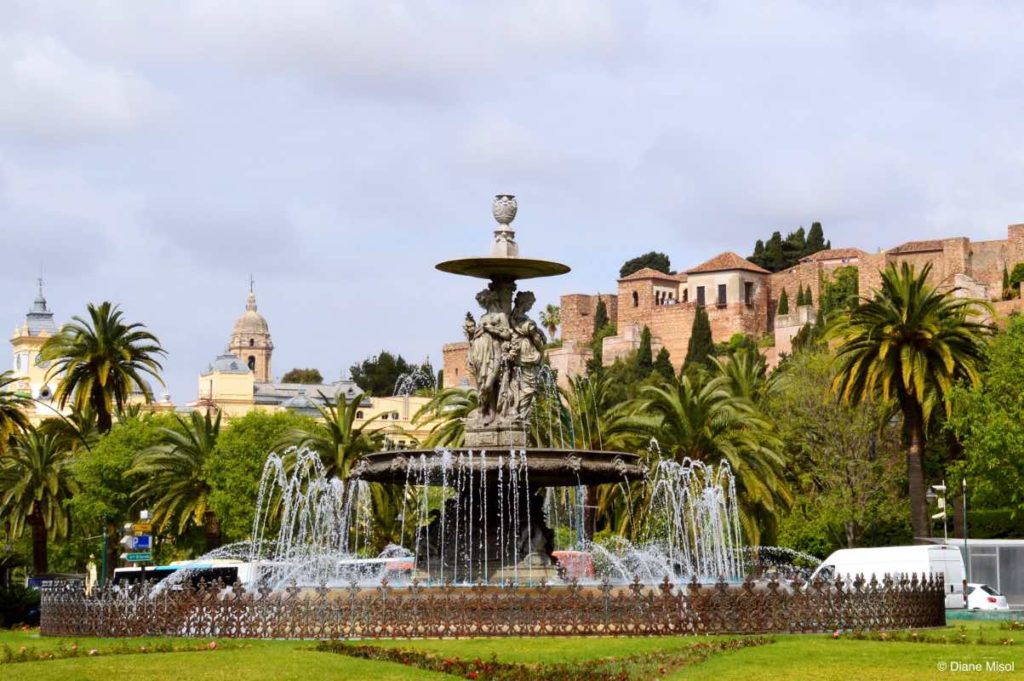
With the Alcazaba perched high above us in prominent view across all of Malaga, we knew this was the first visit on the agenda. Donning our running shoes and backpack loaded with water bottles we started our hike up the winding, steep walls of the Palatial Fortress. Although Google Maps said it would take 1 hour, it took us around 1.5 hours to do this at times strenuous climb.
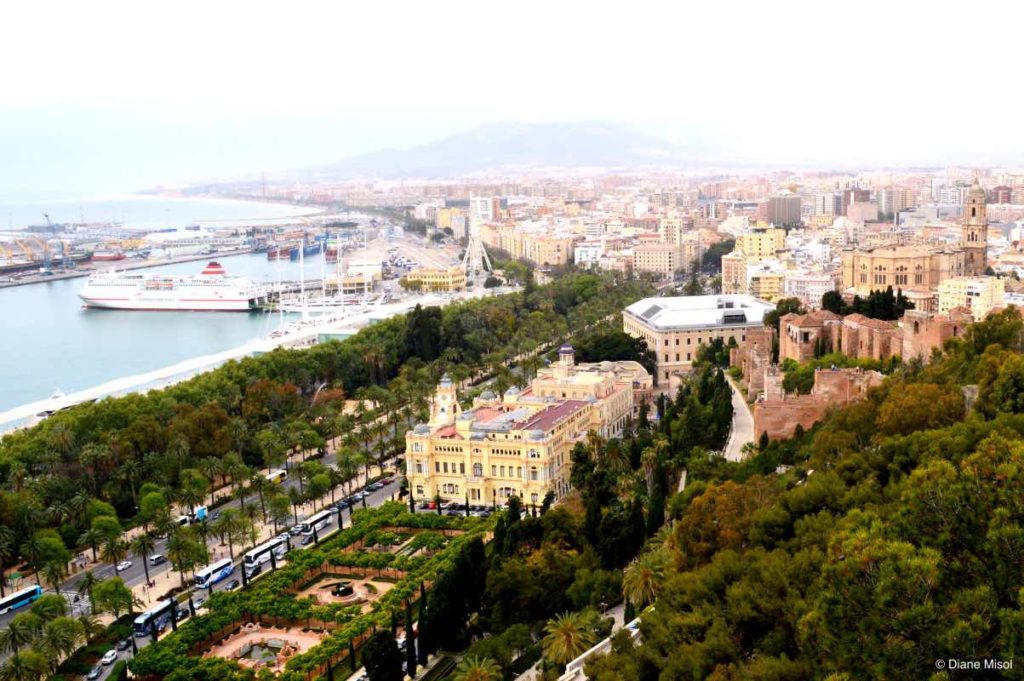
Built in the 11th Century, the Alcazaba, also known as the Gibralfaro Castle after the hills it sits on, offers spectacular views of Malaga as well as the port. The fortification is the best preserved in Spain; double walls and extra reinforcement at entries made this Moorish Architecture a prototype for later Military strongholds.
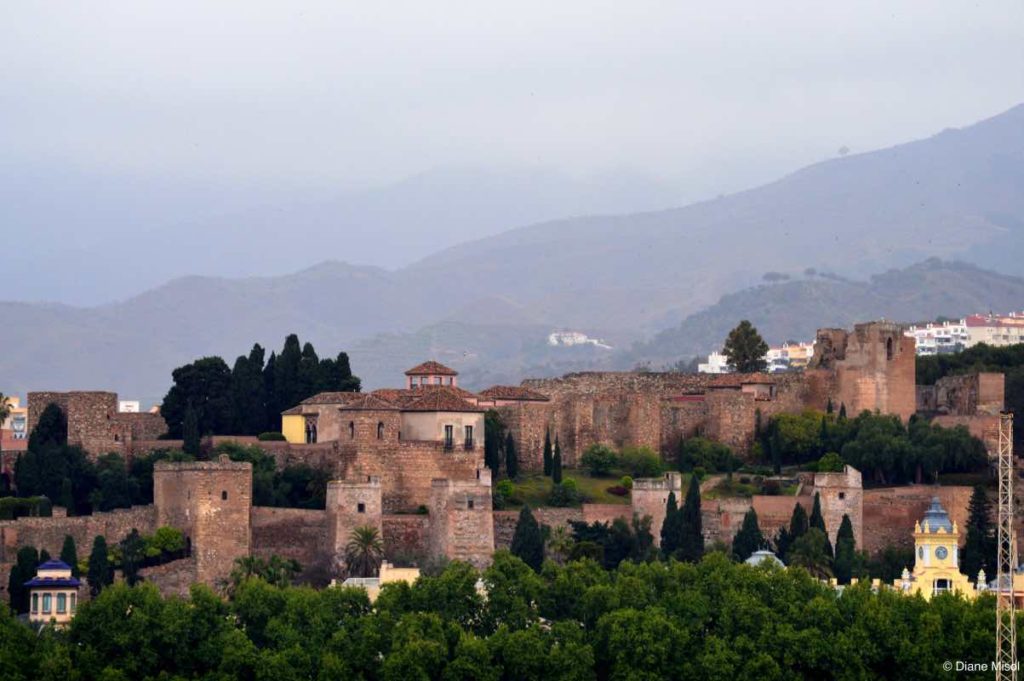
At the foot of the Alcazaba lies the ancient Roman Theatre, El Teatro Romano. Undergoing reconstruction since 1979, the theatre reopened to the public in 2011. Constructed in the 1st Century BC, it was used until the 3rd Century AD as an auditorium. The years following, non-use saw the theatre fall to ruins until 756 AD when the Moorish used the stones to erect the Alcazaba. Archaeological remains of El Teatro Romano were discovered in 1951, almost 5 centuries later, leading to the spectacular restoration we see today.
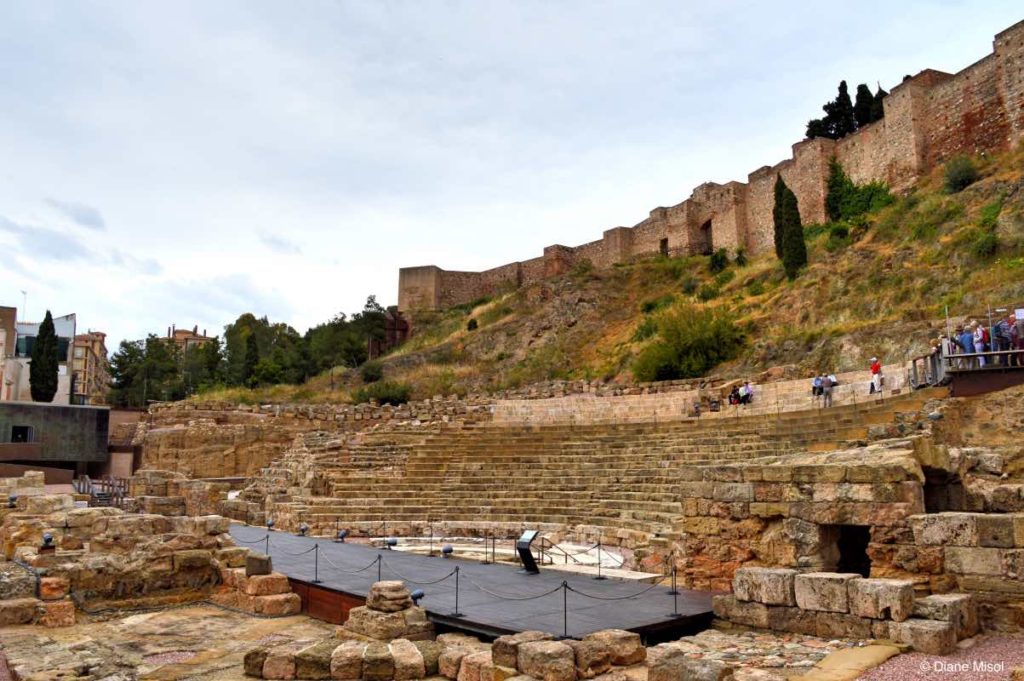
In the city central is the Plaza de la Merced, a popular meeting place and often hosting open air festivities and events. In the centre of the plaza stands the Torrijos Obelisk, commemorating General José María Torrijos and his comrades who were executed by firing squad on the San Andres beach in 1831 due to an attempt to overthrow King Ferdinand VII. The pedestal is a crypt in which Torrijos’s remains lay.
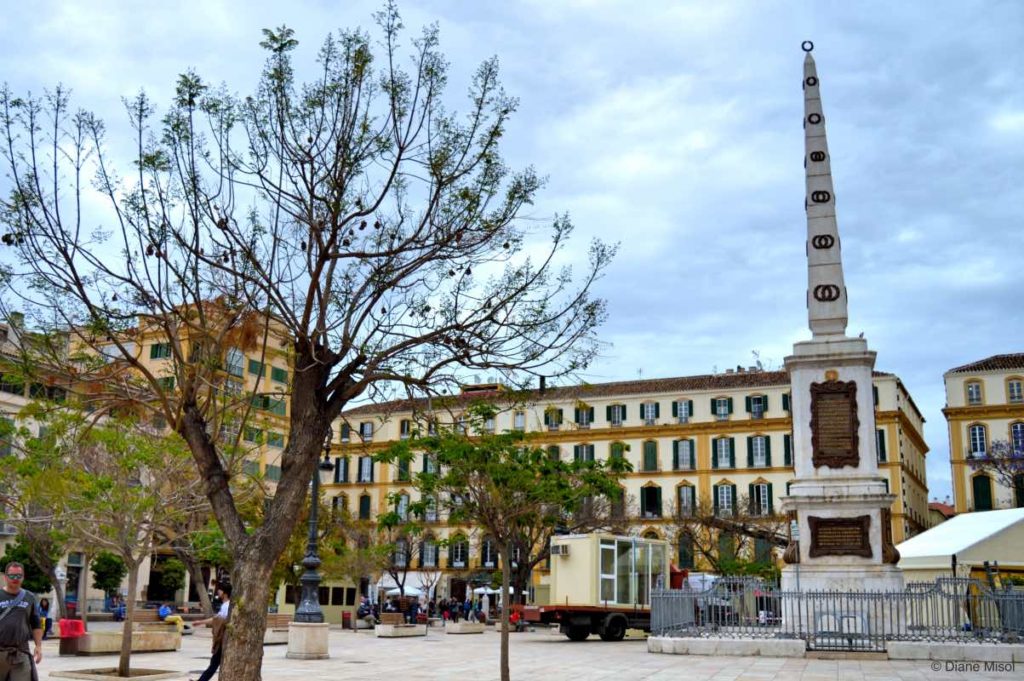
A short walk from Plaza de la Merced found us at Plaza Jeronimo Cuervo, named after a Spanish architect who built the Cervantes Theatre in 1869. Located in the plaza, the theatre is still used today. We found a nice little Restaurant called Vino Mio where we rested our feet, tasted some nice Spanish Riojas (wine – Tempranillo, Crianza) and enjoyed tapas!
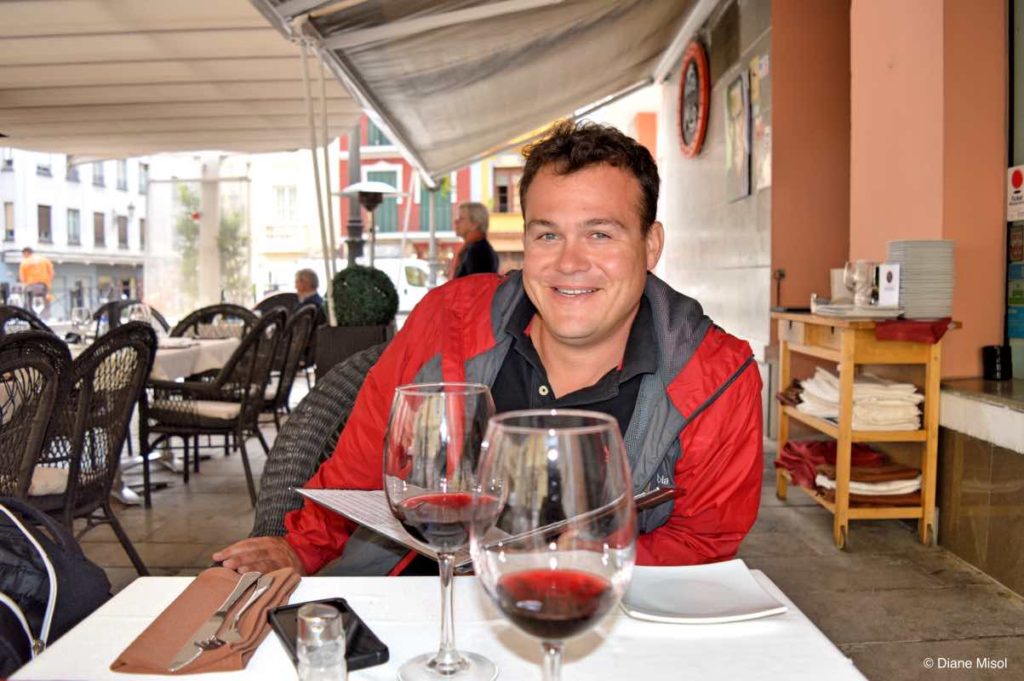
Feeling refreshed, we decided to take a stroll to Malaga Port which dates back to 1000 BC. It remained an important commercial port through centuries, until after the 2nd World War, when it experienced a decline in importance. Nowadays, condos, cafes and restaurants dot the waterfront which has a harbour full of sailboats. It is the oldest, continuously operated port in Spain as well as being one of the oldest in the Mediterranean.
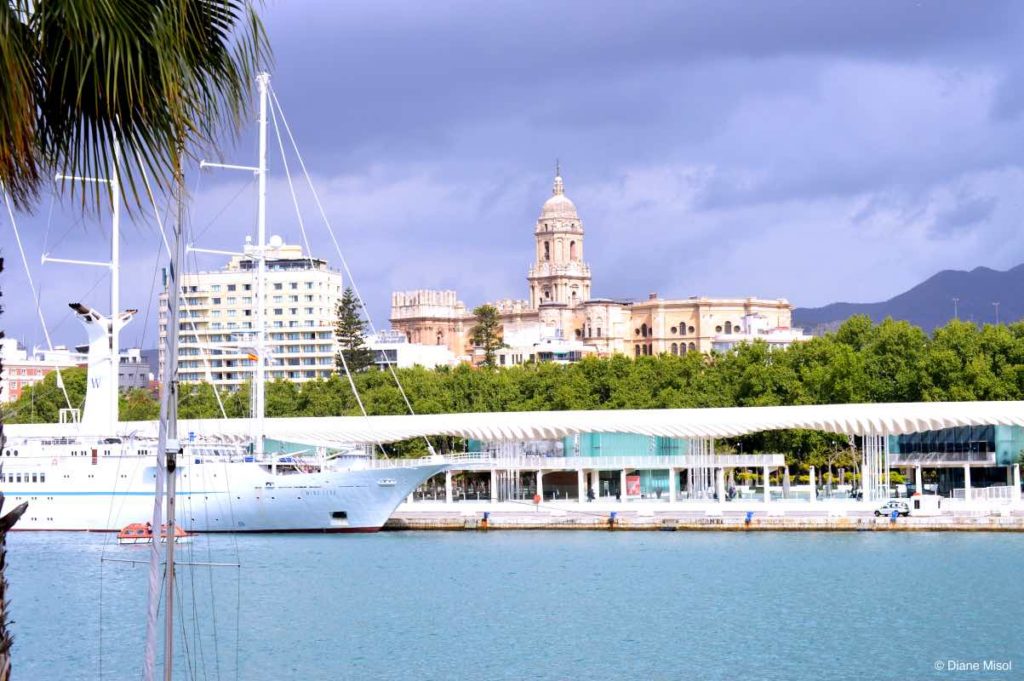
Malaga is definitely a beautiful city well worth visiting. Boasting history and architecture, urban hiking and foodie possibilities, leisurely strolls, and so much more, I do not think you can be bored here; and we didn’t have the energy to check out the nightlife or visit the birthplace of Pablo Picasso. Perhaps next time!
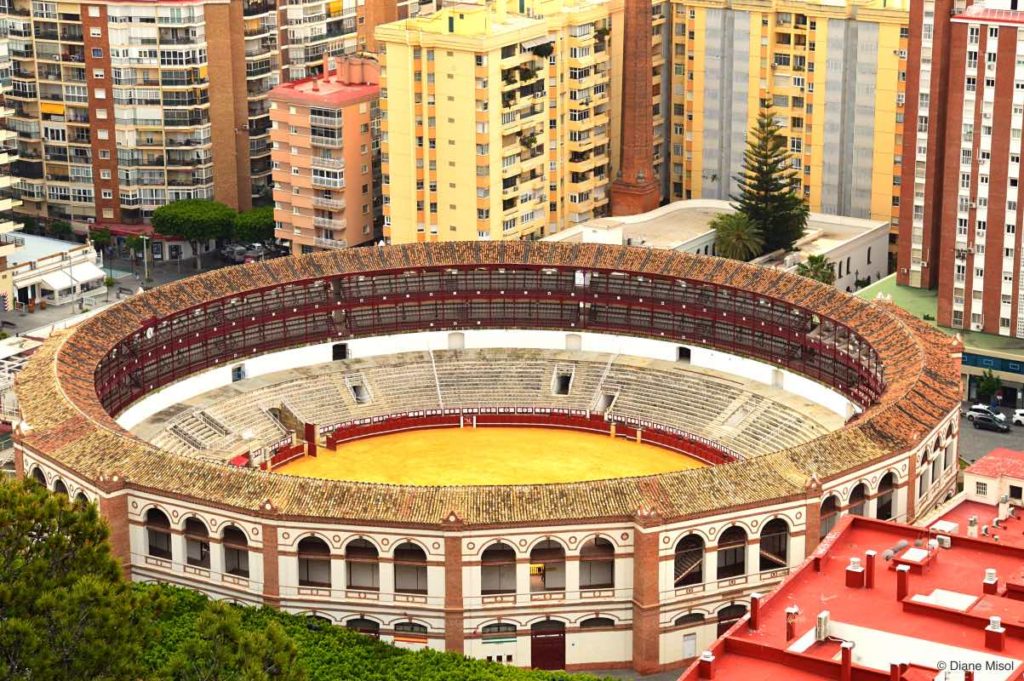
More Info:
Malaga, Spain – Photo Album
Malaga, Spain – YouTube
Tourism in Malaga – Tourism Board of Spain
Foreign Travel Advice – UK Government
Alerts and Warnings – USA Government
Reader Comments
That’s a true valuable content! Malaga is on my list 😀
Super written 🙂